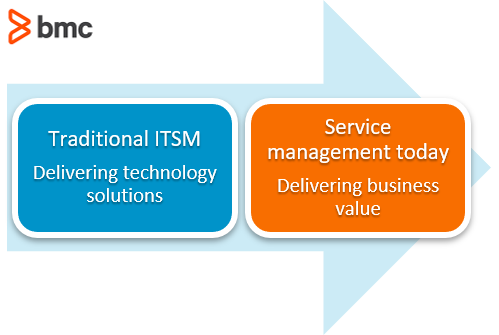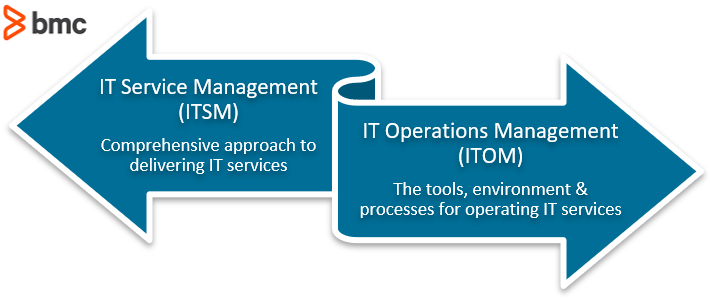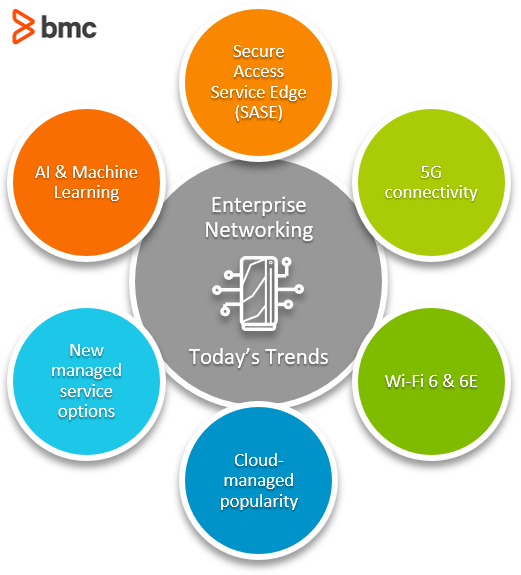Organizations that leverage technology as an enabler for achieving efficiency—which is to say, all organizations—must diligently manage IT applications and the underlying infrastructure.
To ensure business units remain operational, organizations adopt various practices to efficiently deliver IT services. These practices can:
- Help your organization achieve operational efficiency and workplace agility
- Support operational scale-up
- Offer critical insights into your performance in various areas
IT service management (ITSM) and IT operations management (ITOM) are two essential practices. They sound similar in scope, and increasingly do overlap—however, they are not interchangeable. Service management and operations management are different areas of IT.
So, in this article, we’ll delve into:
- The scope of service management and operations management within an organization
- Service and operations management standards
- How they overlap in functionality
How IT service management (ITSM) works
ITSM is an IT management strategy that involves using processes, tools, and frameworks to ensure that your organization can efficiently implement, deliver, management, and support IT services, to both:
- Internal business operations
- End users, often external customers/clients
Increasingly shortened to simply “service management”, because practically all business services are now IT-enabled, you are practicing service management whether you have a formal structure—or not.

By implementing a structure for handling the end-to-end delivery of IT services, organizations stand to achieve several benefits, including:
- Increased agility and adaptability to market changes due to faster delivery, innovation, and resolution
- Improved knowledge sharing among complex team structures
- Preemptive issue identification, root cause analysis, and faster incident resolution
- Better alignment of IT teams and enablers with business goals
- Customer-centric services
- Better overall processes with less waste
Common ITSM practices
ITSM functions on a collection of practices and processes that define and standardize the IT services that your organization offers. These core processes rely on agreed IT service level agreements (SLAs) and key performance indicators (KPIs) that define the overall service delivery.
Some key ITSM processes include:
Change management
The change management practice ensures that IT teams use standard procedures to handle all changes to infrastructure and systems while following compliance and regulatory standards.
Any changes requested are peer-reviewed, analyzed, and scheduled to ensure minimal disruptions to IT services and business operations.
Incident management
Considered one of the most critical IT policies, the incident management practice involves responding to unplanned events and service disruptions as quickly as possible. Each of such incident’s response and resolution is attended to as per pre-defined service restoration SLAs, which help to measure overall business impact during a given period.
IT asset management (ITAM)
Considered the backbone of all service management processes, IT asset management is the end-to-end process of managing the lifecycle of all assets, both hardware and software, in your organization. This practice:
- Ensures an up-to-date record of IT assets
- Monitors asset deployment, usage, upgrades
- Subsequently marks assets for disposal when due
(Learn more about software asset & hardware asset management.)
Problem management
Problem management involves identifying and addressing underlying issues to avoid incidents. Root cause analysis (RCA) and Action Items are the core modules that prevent the recurrence of incidents to cause service disruption.
(See how problem management can become proactive.)
Service request management
One of the most widely used processes of ITSM, service request management is the practice responsible for handling and maintaining records of all minor, non-urgent user requests such as:
- Access requests
- Software upgrades
- Password reset
- Hardware improvements
- Etc.
Knowledge management
The knowledge management practice is responsible for creating, handling, and distributing information assets both within an organization and externally to meet business goals.
(Learn about Knowledge-Centered Service.)
Service management frameworks & the IT service lifecycle
ITSM frameworks are formalized guidelines of best practices and standard processes to implement and manage IT-based services. Some of these standards include:
- ISO 20000
- COBIT (Control Objectives for Information and Related Technologies)
- The Business Process Framework (eTOM)
- DevOps
- ITIL®
While such frameworks overlap to achieve enhanced efficiency across the various verticals of your organization, the ITIL framework is the most globally recognized. ITIL focuses specifically on an IT service’s lifecycle by fragmenting it into a sequence of five stages:
- Service Strategy
- Service Design
- Transition
- Operations
- Continuous Service Improvement
At each stage, ITIL enables a systemic process for efficiently managing the stage in itself and then transitioning to the next one. Of the five stages, Service Operations is the one that continues throughout the lifecycle of IT operations. It is responsible for coordinating and executing activities and processes that are necessary to deliver IT services.
How IT operations management (ITOM) works
Where service management focuses on the delivery of IT services, IT operations management is a set of administrative procedures that manage all the components of your organization’s IT infrastructure. In today’s digital age—that’s a lot of responsibility.
With operations management, organizations can administer defined processes for IT infrastructure provisioning, capacity, performance monitoring, storage, and availability management.
Benefits of a well-structured ITOM practice include:
- Improved levels of service availability
- Better customer and user experience
- Minimal downtime
- Lowered costs of operations due to regular component monitoring
- Highly optimized service delivery
- Robust foundation for digital transformation and DevOps
ITOM Functions
IT operations management focuses on three main aspects of infrastructure management:
Network
One of the core areas of IT infrastructure is undoubtedly network operations. To help with this, ITOM provisions various procedures to manage all internal and external network communications. This also includes managing network security of internal telephony and handheld devices to ensure only authorized users can remotely access the organizational network.
The scope operations management also encompasses handling communication with external servers through efficient port and protocol management.
Hardware, servers & workplace devices
This function involves provisioning, configuring, managing, and troubleshooting the server, including any related components and workplace assets, such as laptops, mobile phones, and tablets.
Here, the operations team is responsible for:
- Maintaining server uptime
- Handling server upgrades and patches
- Managing devices
Though certain organizations scope of their operations differently, many companies include managing data storage, email, and file server setup under the server management umbrella.
Help desk operations
Tasks grouped under the help desk generally involve offering first level support that includes:
- Provisioning users
- Input for configuration audits
- Backup requests
- Facilities management
- Etc.
In some organizations, help desk operations also involves administrative phases including disaster recovery management and IT infrastructure library maintenance.
(Compare technical support to customer service.)
Merging operations & service management
ITSM and ITOM are crucial parts of IT management that ensure consistent and efficient IT service delivery. Although both of their functions overlap, we can clearly distinguish the two:
- Service management (ITSM) offers a comprehensive approach to delivering IT services.
- Operations management (ITOM) handles the tools, environment, and processes for operating such services.
Fundamentally, though, ITOM operates on Service Operations Guidelines, a subset of overall ITSM, as the name implies. These guidelines standardize the management of recurring service operations by monitoring and controlling all tangible and non-tangible components of an organization’s infrastructure.
Historically, operations management service management were two separate functions, with different teams, structures, and areas of responsibility. Today, however, the trend is towards a merging of the two, as technology drives every aspect of business, it’s increasingly challenging to separate successful service delivery from all the necessary underlying practices and technology that supports it.
With the right tools and processes, organizations tend to benefit from:
- Increased server availability
- Reduced operational risk
- Improved customer satisfaction
Additionally, organizations that are looking to embrace efficient models such as DevOps, implementing ITSM standards are always a step closer to achieving enhanced operational efficiency and workflow automation.









